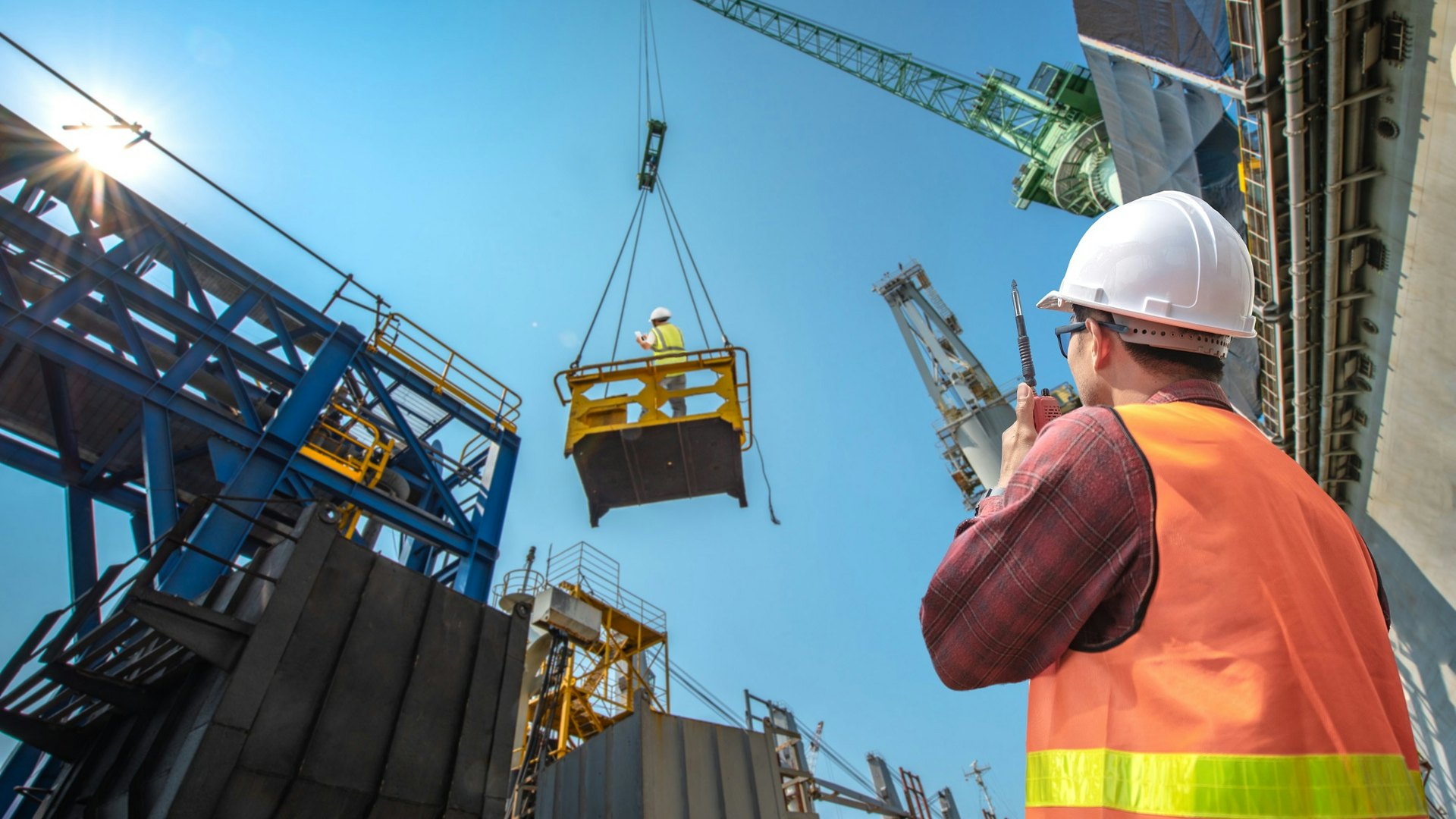Crane Safety Checklist

This crane safety checklist from OSHA covers tips such as:
- Determine the adequacy of ground conditions beneath the equipment set-up area, such as the support/foundation, matting, cribbing, blocking, etc.
- Check for visible indications of repairs of the equipment.
- When overhead power lines are on the construction site, ask if the utility owner/operator was contacted and if the lines are energized. Obtain the voltage of the power lines (if known). Verify whether a work zone around the crane was demarcated and what encroachment prevention steps are being used.
- When a signal person is used on the worksite, verify the individual’s qualifications/documentation. Acceptable documents include both physical and electronic records.
- Verify that the communication system being used by the crane operator and the signal person is the one specified on the signal person’s qualification documentation.
- Checking and inspecting the area of operation.
- Checking for adequate housekeeping and other machinery house inspection.
- If lift plans are being used, verify that they are being followed.
- When equipment is used to hoist personnel, identify who determined that it is infeasible to use another way to reach the work area and that it is necessary to use the crane for this task. This does not apply to steel erection activities under Subpart R.
- Verify whether employers are holding required meetings, such as planning meetings necessary for working near overhead power lines, conducting Assembly/Disassembly (A/D), or hoisting.
- Inspect all rigging equipment that is available for workers to use (slings, chokers, shackles, etc.) for damage, wear, safe working load tags, capacity, and safety factor.
- Verify that load chart and operations’ manuals are available, written in a language that the operator understands (specified on the operator’s certification), and that the information is applicable to the particular crane. Ask the operator or employer where the documents are kept. For example, see if the serial number on the load chart matches that of the crane. Typically, the serial number is found on the nameplate in the cab and on the front cover of the manual.
- Verify operator qualifications and training. Observe crane operations and interview both the employer and the operator to determine whether the operator is competent to operate the equipment safely.
- Verify that the equipment and wire rope inspection requirements have been met and that the documentation is available for all inspections of the equipment. Identify who did the inspection and verify that inspector’s qualifications.
- Determine, through interview and observation, if safety devices and operational aids are functioning through interview or observation. For example, it is possible that employees can be doing other things to compensate for aids and devices that are not functioning properly. For operational aids that are not functioning and have not been repaired, determine whether parts are on order. If parts have been received, document the date of order and/or receipt.
- Visually inspect the hoisting equipment, components, and load line for visible deficiencies. If needed, use binoculars to examine ropes that cannot be inspected closely from a safe position.
- Ask what loads have been lifted and how the operator and/or rigger are determining the weight of the load. For example, are they using a bill of lading or marked weight, the load moment indicator, or crane scale? Verify that the weight of the load(s) was within the capacity of the equipment or below 75% of capacity if a load moment indicator was used.
For more tips, visit the full document here.


